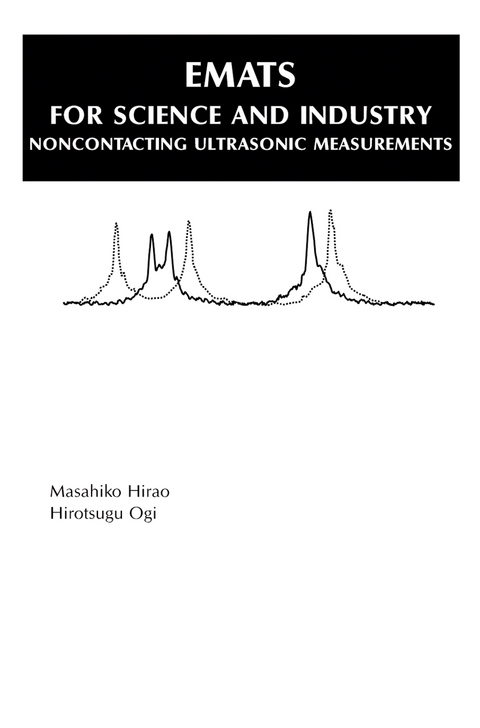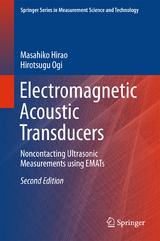
EMATs for Science and Industry
Noncontacting Ultrasonic Measurements
Seiten
2003
|
2003 ed.
Kluwer Academic Publishers (Verlag)
9781402074943 (ISBN)
Kluwer Academic Publishers (Verlag)
9781402074943 (ISBN)
- Titel erscheint in neuer Auflage
- Artikel merken
Zu diesem Artikel existiert eine Nachauflage
EMATs for Science and Industry comprises the physical principles of electromagnetic acoustic transducers (EMATs) and the applications to scientific and industrial ultrasonic measurements on materials. The text is arranged in four parts:
-PART I is intended to be a self-contained description of the basic elements of coupling mechanism along with practical designing of EMATs for various purposes. There are several implementations to compensate for the low transfer efficiency of the EMATs. Useful tips to make an EMAT are also presented.
-PART II describes the principle of electromagnetic acoustic resonance (EMAR), which makes the most of contactless nature of EMATs and is the most successful amplification mechanism for precise velocity and attenuation measurements.
-PART III applies EMAR to studying the physical acoustics. New measurements emerged on three major subjects; in situ monitoring of dislocation behavior, determination of anisotropic elastic constants, and acoustic nonlinearity evolution.
-PART IV deals with a variety of individual topics encountered in industrial applications, for which the EMATs are believed to the best solutions.
-PART I is intended to be a self-contained description of the basic elements of coupling mechanism along with practical designing of EMATs for various purposes. There are several implementations to compensate for the low transfer efficiency of the EMATs. Useful tips to make an EMAT are also presented.
-PART II describes the principle of electromagnetic acoustic resonance (EMAR), which makes the most of contactless nature of EMATs and is the most successful amplification mechanism for precise velocity and attenuation measurements.
-PART III applies EMAR to studying the physical acoustics. New measurements emerged on three major subjects; in situ monitoring of dislocation behavior, determination of anisotropic elastic constants, and acoustic nonlinearity evolution.
-PART IV deals with a variety of individual topics encountered in industrial applications, for which the EMATs are believed to the best solutions.
1 Coupling Mechanism.- 2 Available EMATS.- 3 Brief Instruction to Build Emats.- 4 Principles of Emar for Spectral Response.- 5 Free-Decay Measurement for Attenuation and Internal Friction.- 6 In-Situ Monitoring of Dislocation Mobility.- 7 Elastic Constants and Internal Friction of Advanced Materials.- 8 Nonlinear Acoustics.- 9 On-Line Texture Monitoring of Steel Sheets.- 10 Acoustoelastic Stress Measurements.- 11 Measurements on High-Temperature Steels.- 12 Measurement of Induction-Hardening Depth.- 13 Detection of Flaw and Corrosion.- 14 Average Grain Size of Steels.- 15 Remaining-Life Assessment Of Fatigued Metals.- 16 Creep Damage Detection of Steels.- References.
| Erscheint lt. Verlag | 30.9.2003 |
|---|---|
| Zusatzinfo | X, 372 p. |
| Sprache | englisch |
| Maße | 155 x 235 mm |
| Themenwelt | Naturwissenschaften ► Physik / Astronomie ► Elektrodynamik |
| Naturwissenschaften ► Physik / Astronomie ► Optik | |
| Technik ► Maschinenbau | |
| ISBN-13 | 9781402074943 / 9781402074943 |
| Zustand | Neuware |
| Informationen gemäß Produktsicherheitsverordnung (GPSR) | |
| Haben Sie eine Frage zum Produkt? |
Mehr entdecken
aus dem Bereich
aus dem Bereich
eine Einführung in die Gleich- und Wechselstromtechnik
Buch | Hardcover (2024)
Hanser (Verlag)
CHF 48,95



